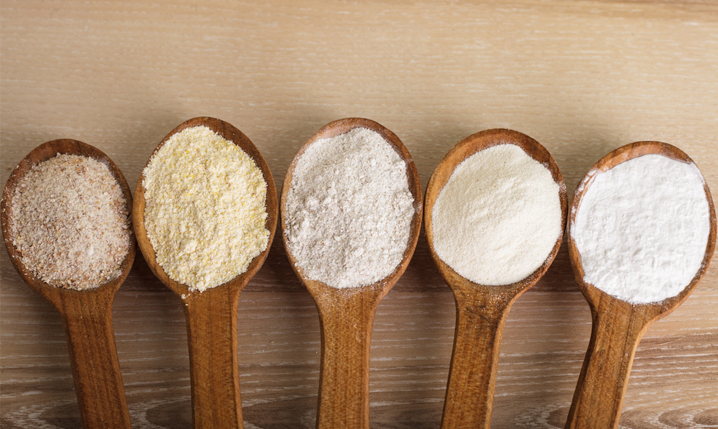Winters are on the brink of stating, which calls for special addition of foods all over the globe to be included in our diets. Talking about it the first thing that we have in mind are the delicious and from the healthy fats category is the dry fruits and nuts. Food like almonds, pistachio, walnuts, etc. However, sometimes we do forget that there are other things that help in the cold season such as our very own sesame seeds. Yes, these small seeds could actually help in the colder seasons to keep you all cozy from the inside. But that is not all that they do, these tiny almost tasteless seeds have so much to give, things like hair and beauty benefits as well as health benefits. So much so that these seeds especially the white ones are prized in the Ayurveda medicine as a source of energy.
Let’s delve deep and see the amazing benefits white sesame seeds can offer us and by the end you might be able to get why it is one of the super foods we can include easily in our diets.
Offers Anti-aging properties
Yes! It’s true you don’t need expensive creams and chemical treatments if you just add a spoonful of sesame seeds in your daily diet. These seeds are packed with antioxidants that help reverse signs of ageing, ultimately giving you a youthful skin that you desire.
Helps in Hair Growth.
The white sesame seeds help reinforce the roots because of its omega fatty acid content present. It stimulate hair growth and maintain existing hair damage. Regular use of these seeds helps in moisturizing the scalp as well as improve the blood circulation, which helps in rejuvenating hair follicles.
Great for Skin Health
Want to keep your skin looking soft and supple even in winters? Try this hack. Mix two tablespoons of powdered sesame seeds with one tablespoon of olive oil and mix it well. This will create a smooth paste, put it on your dampened face and remove after 10 minutes. The oil in the white sesame seeds does miracles for your skin. As it has anti-inflammatory properties that helps heal redness, sores, dryness and facial issues.
Boosts Dental Hygiene
Don’t have the time to visit a dentist for your regular appointments? Don’t fret! Just crush the seeds up and brush with them. They will help in removing dental plague and plague related smell. Giving you a few days to push that appointment.
Increases Digestion
The fiber in the seeds help in smooth bowel movements and the oil in them helps lubricates your intestines.
Best for energy
Did you know? That apart from the healthy fats like Omega-6 and polyunsaturated fatty acids, white sesame seeds also contain fiber, magnesium, iron, and phosphorus. Which helps boost the immune system and the energy levels.
Stabilizes Blood Pressure
The white sesame seeds are rich in magnesium which aids in preventing hypertension. The composite sesamin that is found in sesame oil are known for regularizing blood pressure levels.
Supports bone health
Studies suggest that adding calcium and zinc in your diet helps fight Osteoporosis, which is a condition of brittle bones that has an increased vulnerability to fracture.
Aids in Mental Health
White sesame seeds contain an oil with amino acid called tyrosine that is directly connected to the serotonin movement. Serotonin, a neurotransmitter influences our mood, whose imbalance could lead to stress and depression. Experts agree that including foods carrying serotonin helps in feeling affirmative, keeping the lingering stress at bay.
Fine source of unsaturated fats
Sesame oil mostly offers unsaturated fats, unlike butter and oils, which are high in unhealthy saturated fat. The oil has 42 grams of polyunsaturated fats, 40 grams of monounsaturated fats, and around 14 grams of saturated fat per 100 grams, according to the nutritional value chart. The proportions of the three types of fats, which are present in variable amounts in all cooking oils, decide whether they are good or bad.
How to include sesame seeds in your diet?
Sesame seeds are a staple in many cuisines such as Japanese or Chinese cuisines, Indians too love the nutty flavored seeds. Due to its warming properties, it is especially popular throughout the winter.
You can add these nutrient-dense seeds to any of your rice dish, noodles, or even cereal. Apart from that you can add sesame seed to your smoothie, yogurt, acai bowl or salad for some nutty crunch.
Additionally, soaking these seeds all night helps with calcium and mineral absorption from the seeds. Also lessens the effects of oxalic acid present in them and can inhibit nutrient absorption. However, avoid consuming excessive amounts of these seeds if you have a weak stomach or dealt with kidney stones.
So use a healthy dose of white sesame seeds to reap the many advantages to maintain a healthy diet.




